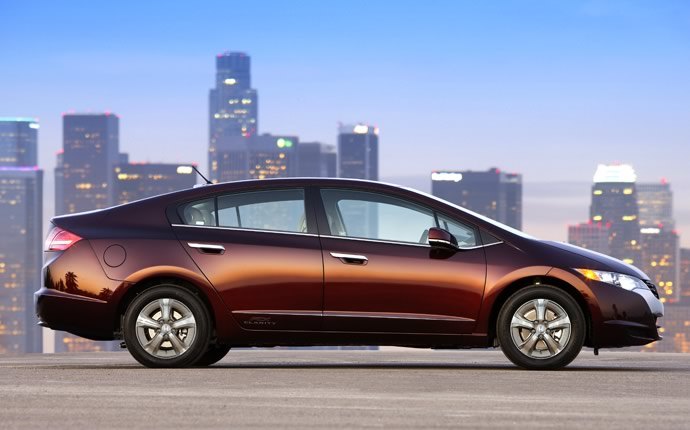Never Say Never: Hydrogen, Diesel En Vogue Again
Remember this piece from the Honda Summer 2008 Hydrogen Collection? It was supposed to point the way to future of green fuel technology before the Tesla brought plug-in sex appeal down the ramp with their Roadster and, later on, the S, as well as the trend of compliance EVs from Chevrolet, Volkswagen and Kia.
But with sales of plug-in hybrids advancing far slower than originally expected regulators are taking another look at alternative ZEV powertrains.
Back in 2009, U.S. President Barack Obama set a goal for 1 million EVs on the road by 2015, going so far as to place a $5 billion bet on Tesla and Fisker among other automakers. Since then, only 95,000 units have managed to leave the showroom for the open road, with sales of over 500,000 predicted for 2015 by West Bloomfield, Mich.-based Baum & Associates analyst Alan Baum. With the current administration downplaying their role in the EV market, President Obama is awarding $4 million to aid in the development of fuel cell technology and storage for hydrogen-powered vehicles.
Leading the charge toward the hydrogen future is California. Aside from passing a measure to provide 100 hydrogen fueling stations as part of their clean technology vision, the state’s legislature has fine-tuned the Zero-Emission Credit formula to better benefit hydrogen vehicle producers — such as Honda and General Motors, who announced a partnership to develop their respective technologies back in July — while drawing down power from Tesla to as much as 40 percent by 2015 for each S sold.
Back in D.C., Audi is putting the pressure on the Environmental Protection Agency to change their mileage formula for the showroom window sticker, and to level the playing field in taxation between diesel and gasoline. The reasoning, according to Audi of American president Scott Keogh, is that the current formula favors gasoline power on the assumption that most driving is done in the city; diesel it at its most efficient on the highway, and is one-third more efficient than gasoline in otherwise equal conveyances according to the U.S. Department of Energy. The diesels used today are cleaner as a result of the advent of ultra-low sulfur fuel and tailpipe exhaust treatment.
More by TTAC Staff
Latest Car Reviews
Read moreLatest Product Reviews
Read moreRecent Comments
- ToolGuy 9 miles a day for 20 years. You didn't drive it, why should I? 😉
- Brian Uchida Laguna Seca, corkscrew, (drying track off in rental car prior to Superbike test session), at speed - turn 9 big Willow Springs racing a motorcycle,- at greater speed (but riding shotgun) - The Carrousel at Sears Point in a 1981 PA9 Osella 2 litre FIA racer with Eddie Lawson at the wheel! (apologies for not being brief!)
- Mister It wasn't helped any by the horrible fuel economy for what it was... something like 22mpg city, iirc.
- Lorenzo I shop for all-season tires that have good wet and dry pavement grip and use them year-round. Nothing works on black ice, and I stopped driving in snow long ago - I'll wait until the streets and highways are plowed, when all-seasons are good enough. After all, I don't live in Canada or deep in the snow zone.
- FormerFF I’m in Atlanta. The summers go on in April and come off in October. I have a Cayman that stays on summer tires year round and gets driven on winter days when the temperature gets above 45 F and it’s dry, which is usually at least once a week.


































Comments
Join the conversation
Every time I see Semi-trucks barreling about the interstates belching tones of burned diesel byproducts into the atmosphere, I wonder to myself why such a fuss is made about a few modern super efficient clean diesel cars with ever harsher emissions laws.
Thought I'd comment on my experience with a 2013 Cayenne diesel, my first "diesel experience". Just turned 14k miles. Overall, the vehicle is remarkable for it's thrust and with no special attention to economy the computer shows an average of 30mpg and change. I can now understand the appeal of these things in Europe, as the torque provides all the cut and thrust you really need and the economy is amazing considering the size of the vehicle. I read in a Porsche magazine (Panorama?) that 30% of Cayenne sales are diesel, far more than their expectation. The only con I have experienced is a less than exciting exhaust note - a small price to pay for such an excellent daily driver. For excitement, I would choose the GTS version, but for a frugal all rounder the diesel is the way to go.